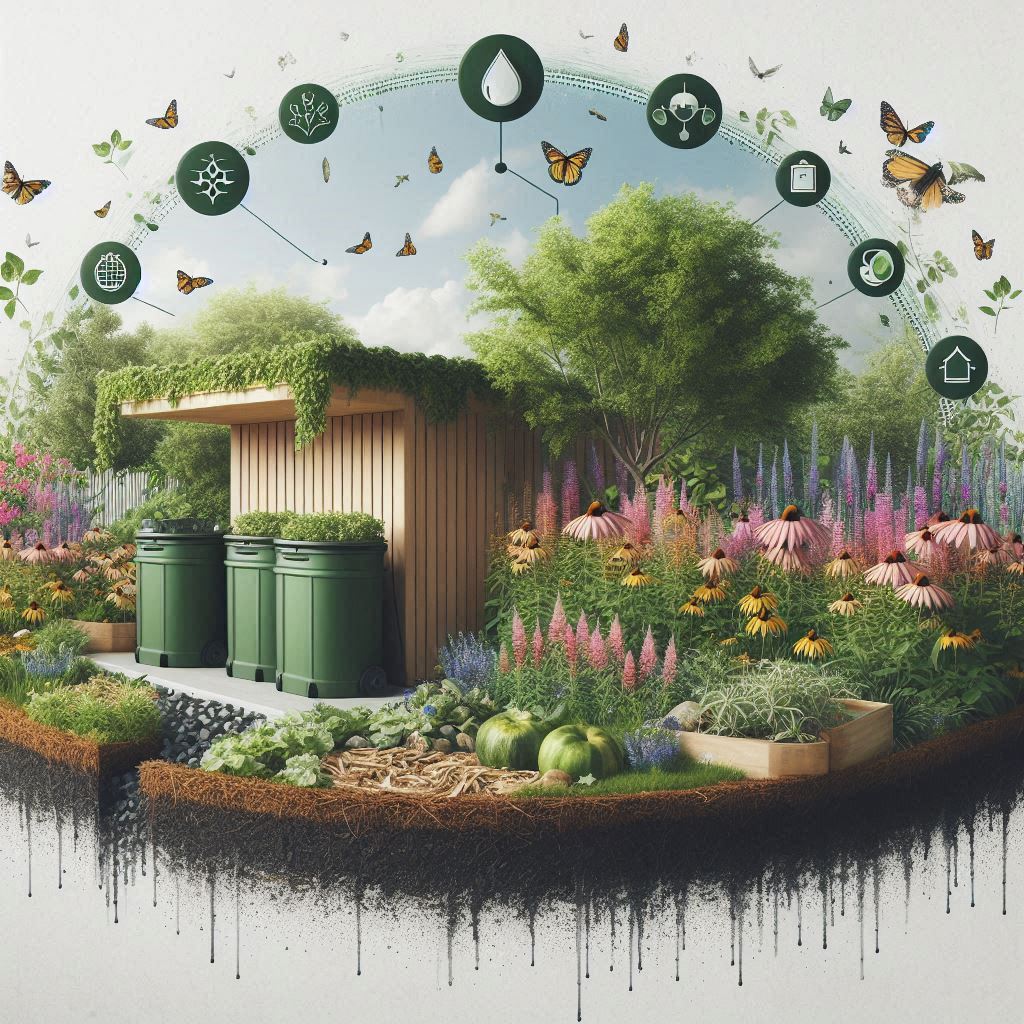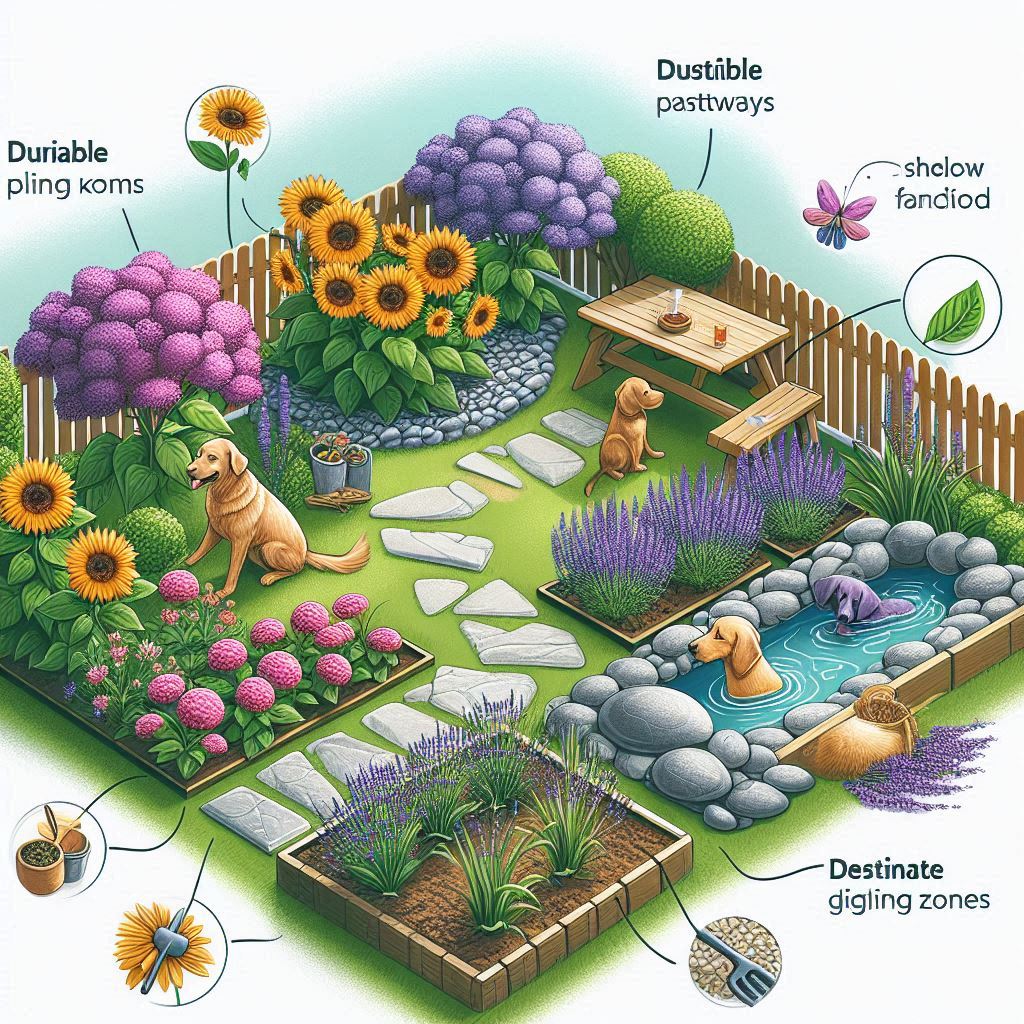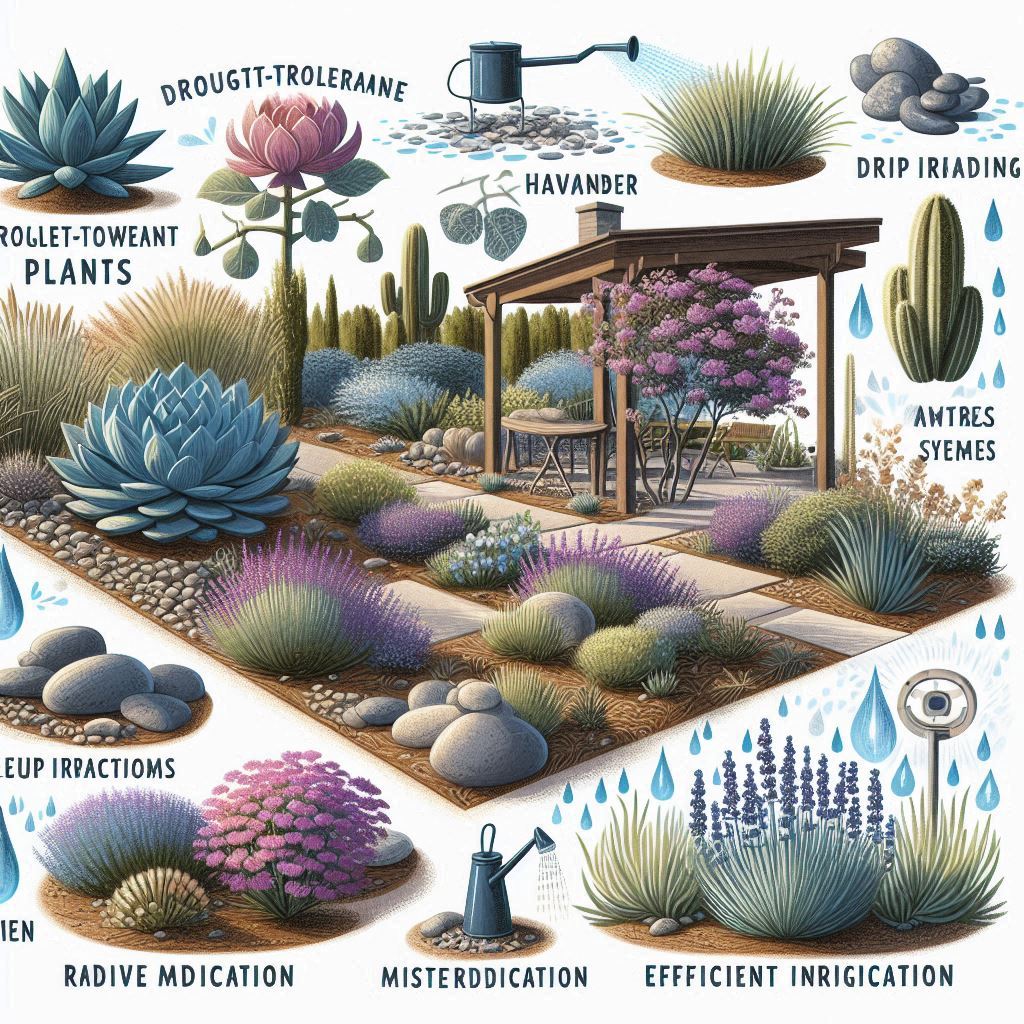In an era where sustainability is more important than ever, gardening offers a unique opportunity to make a positive impact on the environment. By adopting eco-friendly practices, you can create a garden that not only thrives but also contributes to the health of the planet. This guide will walk you through practical steps to build and maintain a sustainable garden, focusing on composting, water conservation, and the use of native plants.
1. Composting: Turning Waste into Wealth
Composting is one of the most effective ways to reduce waste and enrich your garden’s soil naturally. Instead of discarding kitchen scraps and yard waste, you can transform them into nutrient-rich compost that helps your plants thrive.
- Getting Started with Composting: Begin by setting up a compost bin in your garden. You can use a ready-made compost bin or create one from wooden pallets. Start layering green materials (like fruit and vegetable scraps, coffee grounds, and grass clippings) with brown materials (like leaves, straw, and cardboard). Ensure you turn the pile regularly to aerate it, which speeds up the decomposition process.
- Benefits of Composting: Compost improves soil structure, enhances moisture retention, and provides essential nutrients to your plants. It also reduces the need for chemical fertilizers, making your garden more eco-friendly.
2. Water Conservation: Smart Irrigation and Rainwater Harvesting
Water is a precious resource, and conserving it is a key component of sustainable gardening. By implementing water-saving techniques, you can maintain a healthy garden while reducing your water usage.
- Smart Irrigation Systems: Invest in a drip irrigation system or soaker hoses that deliver water directly to the roots of your plants. These systems minimize water wastage by reducing evaporation and runoff. Additionally, consider installing a smart controller that adjusts watering schedules based on weather conditions.
- Rainwater Harvesting: Capture and store rainwater using barrels or cisterns connected to your gutter system. This collected rainwater can be used to water your garden, reducing your dependence on municipal water supplies. Rainwater is also free of the chemicals found in tap water, making it better for your plants.
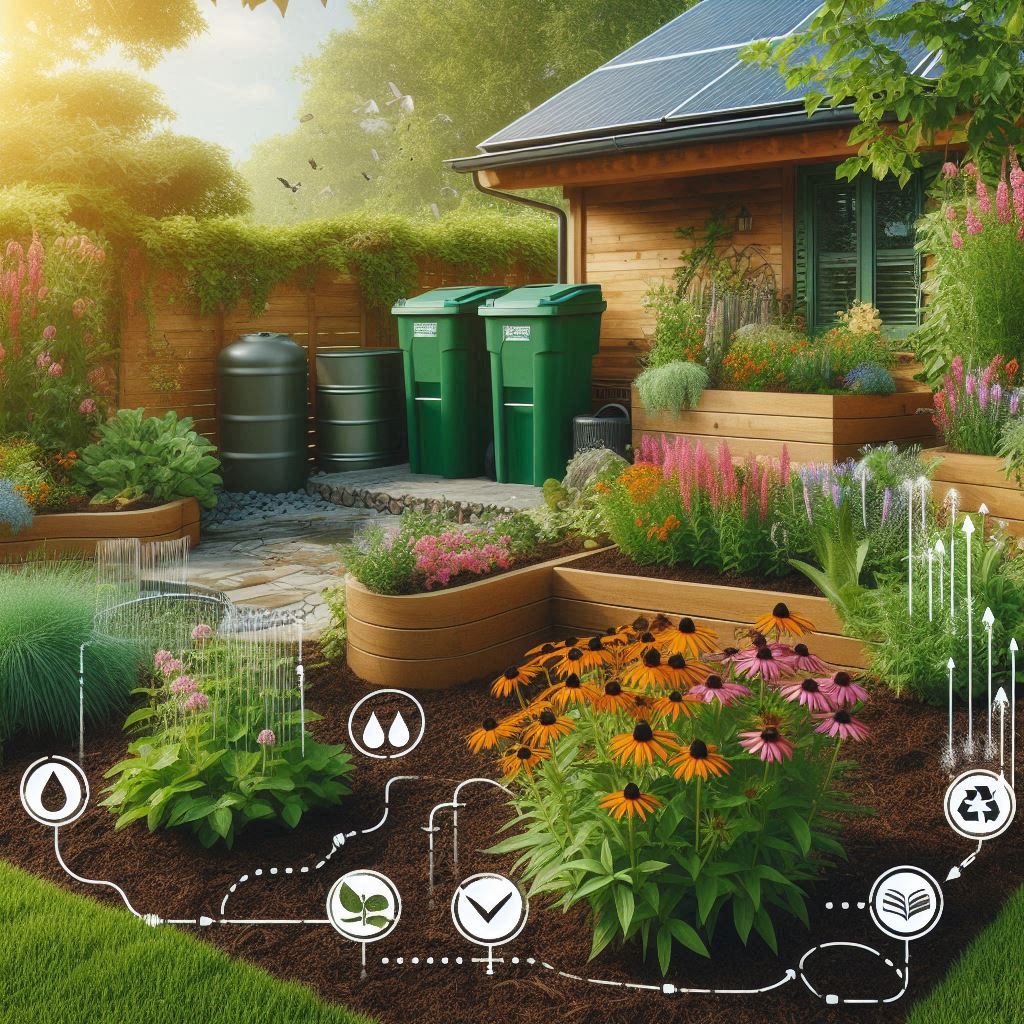
3. Choosing Native Plants: Enhancing Biodiversity and Reducing Maintenance
Native plants are species that have evolved naturally in your region over thousands of years. They are well-adapted to the local climate, soil, and wildlife, making them an ideal choice for sustainable gardening.
- Benefits of Native Plants: Native plants require less water, fertilizer, and pest control, as they are already suited to the local environment. They also provide habitat and food for native wildlife, such as birds, bees, and butterflies, promoting biodiversity in your garden.
- Selecting Native Plants: Research native plant species that thrive in your area. Examples include coneflowers, black-eyed Susans, and butterfly milkweed in many North American regions. Planting these species not only reduces your garden’s environmental footprint but also creates a haven for local wildlife.
4. Mulching: Protecting Soil and Reducing Weeds
Mulching is another eco-friendly practice that benefits both your garden and the environment. It involves spreading organic materials over the soil’s surface to retain moisture, suppress weeds, and regulate soil temperature.
- Types of Mulch: Use organic mulches like wood chips, straw, or shredded leaves. These materials break down over time, adding organic matter to the soil and improving its fertility.
- Applying Mulch: Spread a 2-4 inch layer of mulch around your plants, being careful not to cover the base of the stems. This helps retain soil moisture, reduces the need for frequent watering, and minimizes the growth of weeds, saving you time and effort.
5. Reducing Chemical Use: Natural Pest Control and Fertilizers
Chemical pesticides and fertilizers can harm the environment by contaminating soil, water, and non-target species. Sustainable gardening emphasizes the use of natural alternatives that are safer for both your garden and the planet.
- Natural Pest Control: Encourage beneficial insects like ladybugs, lacewings, and predatory beetles that feed on garden pests. You can attract these helpful insects by planting nectar-rich flowers like marigolds and dill. Additionally, use physical barriers like row covers or traps to protect your plants from pests.
- Organic Fertilizers: Opt for organic fertilizers made from natural sources, such as compost, manure, or bone meal. These fertilizers release nutrients slowly, reducing the risk of nutrient runoff and promoting long-term soil health.
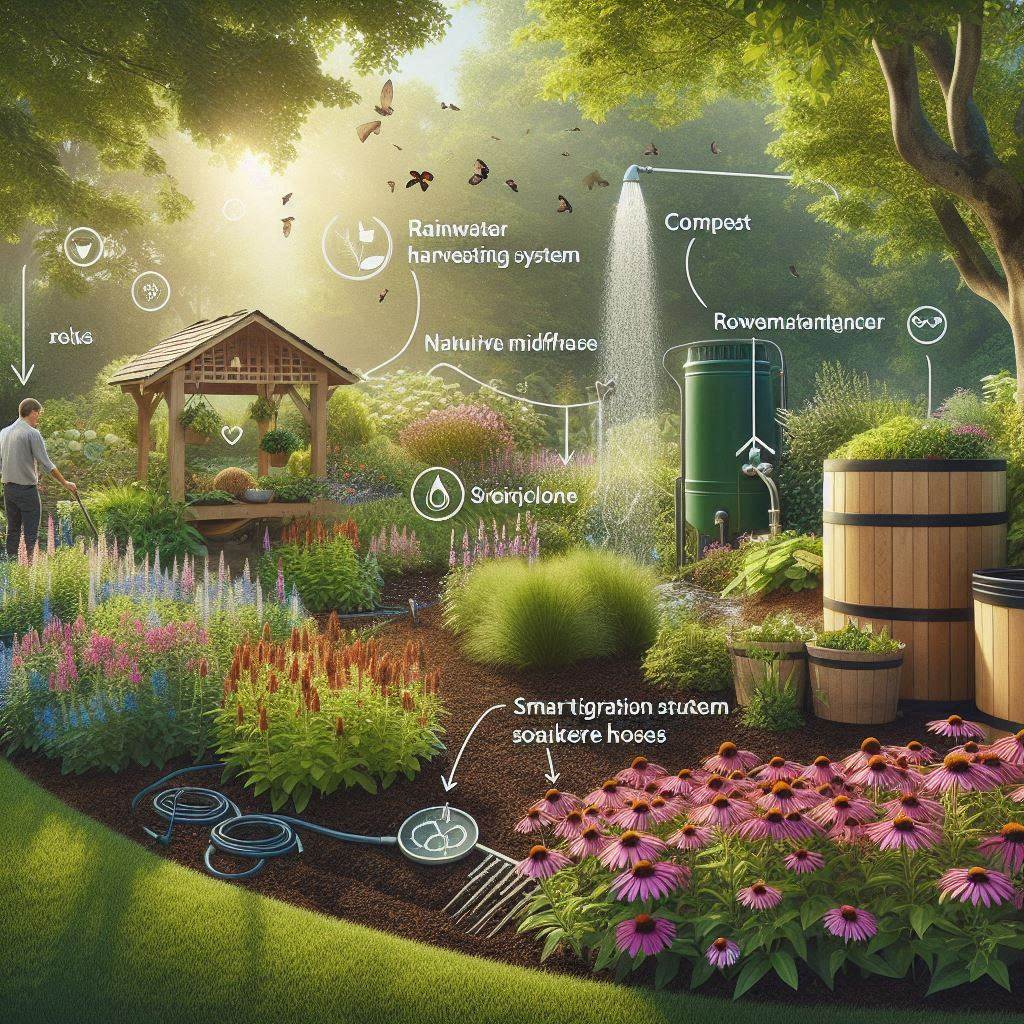
6. Sustainable Garden Design: Planning for the Future
When designing your garden, consider its long-term sustainability. Thoughtful planning can reduce resource use and ensure your garden remains eco-friendly for years to come.
- Plant Grouping: Group plants with similar water, soil, and sunlight needs together. This practice, known as hydrozoning, ensures efficient use of resources and reduces the need for extra watering or soil amendments.
- Perennial Plants: Incorporate perennial plants that return year after year, reducing the need for replanting. Perennials typically have deeper root systems, which help stabilize soil and reduce erosion.
- Edible Gardens: Growing your own fruits, vegetables, and herbs not only provides fresh produce but also reduces your carbon footprint. By eating what you grow, you decrease the demand for commercially grown and transported food.
Conclusion
Sustainable gardening is not just a trend; it’s a lifestyle choice that benefits both you and the environment. By composting, conserving water, planting native species, and reducing chemical use, you can create a thriving, eco-friendly garden that supports local ecosystems. Start small, and gradually incorporate these practices into your gardening routine. Over time, your garden will flourish with less effort and greater harmony with nature.
